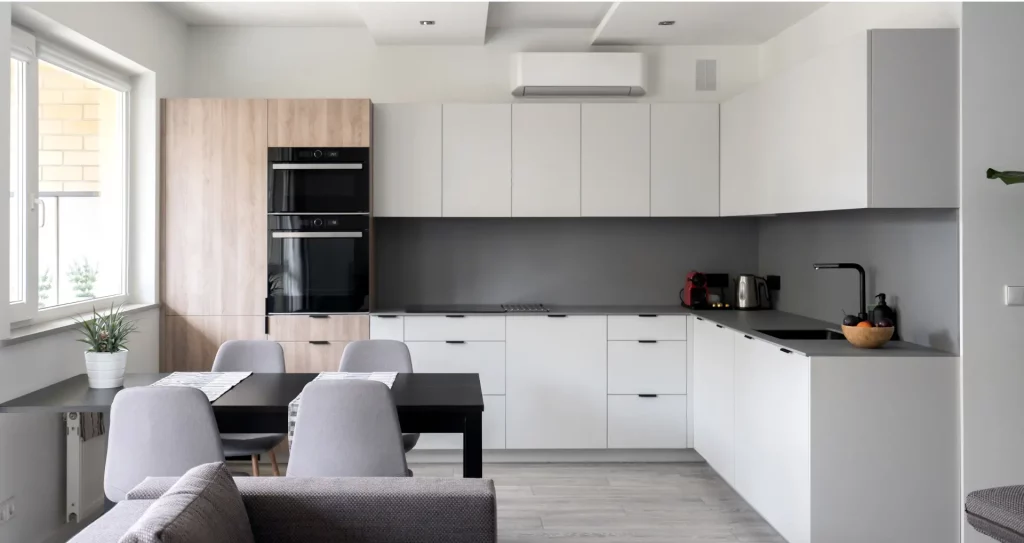
When buying an investment property, expect to put down a bigger deposit than you would for your main home. Most lenders ask for at least 20% to 25% of the property’s value, and sometimes even as much as 40%. Putting down more can score you better mortgage rates and might improve your return on investment, according to UK Moneyman.
This article looks at the requirements of down payment in property investment, giving you the knowledge to use smart strategies your entry into the property market.

Comprehending the significance of down payments is a crucial first step in your property investment adventure, as it influences both your ability to secure an investment property loan and the terms of that loan.
To navigate the investment property financing landscape, it’s essential to become familiar with the different types of loans available and their down payment requirements. This can help you plan your property investment strategy more effectively and make informed decisions when buying an investment property.
A conventional mortgage is a common choice for property investors. They are typically fixed-rate loans, meaning the interest rate stays the same for the lifetime of the loan. In the UK, a conventional mortgage loan can range from 10-30 years, with 15-30 year loans being the most common.
There are a few requirements you need to hit to be eligible for a conventional loan in the UK. You will need to have a stable income and typically be in full time employment. If you are self-employed, you may be required to provide additional documentation to show your ability to repay the loan.
Your credit score will be taken into consideration by the lender. A good credit score ranges between 600-620, but could vary depending on the lender’s own requirements. The higher your credit score, the easier it is to secure a loan and lower your interest rate.
A conventional mortgage requires a down payment of 5-20% of the purchase price. Some lenders may offer loans with lower down payment or no down payment at all. So, while a conventional mortgage can offer favourable loan terms, it’s important to consider these requirements when strategising your investment property loan options.
Portfolio mortgages allows portfolio landlords to place all their buy-to-let properties and first charges on these properties with just one mortgage lender. They sit between buy-to-let mortgages and commercial mortgages.
So, what is a portfolio landlord? A portfolio landlord is an individual who has four or more buy-to-let properties, including those owned privately or through a limited company.
They work the same way as a normal buy-to-let mortgage and are both secured on rental properties and typically interest only. The main differences are these properties are managed on a portfolio level rather than an individual asset level. However, they require a down payment ranging from 20-40% which is higher than a conventional mortgage. A portfolio mortgage can make managing your properties easier as only a single monthly payment is required and you will only need to communicate with one lender. It also manages any fees and transactions that cover the whole portfolio.

While down payment requirements may seem daunting, it’s important to remember that traditional savings such as selling assets, remortgaging and withdrawing from your pension aren’t the only way to accumulate these funds.
There are several creative financing solutions that can help you secure your investment property loan, including an investment with Prosperity Wealth and other creative ways such as a partnership through a joint venture, or raising money through marketplaces sites through peer-to-peer finance or crowdfunding.
Are you looking to invest in a buy-to-let property? At Prosperity Wealth, we have created two unique payment plans providing flexibility and security whilst making property investment more convenient and affordable for you, ‘The Pay Monthly Deposit Builder Plan’ and ‘Our Developer Finance Payment Plan’.
The Pay Monthly Deposit Builder plan has been created to enable thousands of investors to begin their journey on the property wealth ladder, allowing investors to complete one purchase and begin their next.
Clients place a total Deposit of 35% of the property value. This is divided into 5% of the purchase price paid upon Reservation, and 30% paid during the Construction Phase – typically 24 months. The 30% is divided into 24 affordable monthly instalments, meaning you don’t have any lump sum on hand to secure market leading property opportunities.
Once the property is ready, Prosperity Wealth can help you in securing a buy-to-let mortgage. The 35% Deposit you have established will provide you with a good range of mortgage options. Alternatively you could complete your purchase with cash.
In the course of a decade, you could secure five properties – a solid foundation for your future retirement.
Our Developer Financial Payment plan sees buyers place a total Deposit of 70% of the property value during the build period. This 70% is divided into 5% paid upon Reservation, and 65% paid in affordable monthly instalments. The 30% balance is then effectively ‘financed’ by the Developer at 0% interest.
The outstanding 30% is paid off by the rental income of the property – all fully managed by Prosperity. The balance is typically paid off in less than five years, after which you will own the property 100%!
There is no mortgage application required for this payment option, so this payment option is suitable for those who wish not to apply for one. This allows cash buyers the opportunity to leverage at zero % interest. This payment plan also means the Rental of your property is fully managed from completion.
This well-proven model is a hands-free and stress-free solution available only from Prosperity.
If you are looking for a flexible way of raising finance, a joint venture is a great way to do so. They allow you to raise finances according to the needs of the individual parties where you can input the capital you have and want to contribute, depending on the time and effort you want to put into the project.
Generally, there are more people with money to invest than there are entrepreneurs with good projects, so going into property investment with a partner or partners who have the cash to invest (or can help raise the money) is a great way of getting into a property development project.
If you are looking to raise finance for a property development project from investors who have money to lend, peer-to-peer finance (P2P for short) is a great way of doing so. P2P can be used either to raise money for a property investment business, a specific project or both. The way P2P works is by listing your proposal on marketplace sites such as Loanpad and CapitalStackers. Investors can view your proposal and decide if they’d like to invest and then make a bid of however much they want.
The advantage of funding a property development project through P2P over lending money from a bank is that investors are likely to have a more relaxed approach to lending, although they may charge higher interest than a normal commercial rate of interest. P2P investors are more likely to consider riskier projects in the hope of making a larger return than a project without much risk.
It is also worth noting in the UK, every P2P platform is regulated by the Financial Conduct Authority (FCA), protecting lenders from malpractice by the provider. It doesn’t however protect you from losses or provider insolvency.
Although similar in the way that you are raising funds on a marketplace site, crowdfunding is very different to peer-to-peer finance. In the digital age, property development crowdfunding has emerged as a viable option for raising funds for down payments on investment properties. This approach is typically used to raise finance for commercial projects, although they can be used for projects that have a social benefit.
Crowdfunding platforms such as GoFundMe and Crowdfunder cater to a wide audience, creating a pool of potential investors who can contribute various amounts (small or large) towards your property investment from a number of different backgrounds.
Though not as conventional as other methods, crowdfunding can offer a unique solution for those struggling to secure a down payment. It’s important to thoroughly research and choose a reputable platform, present a compelling case for your investment, and understand the terms and conditions associated with the platform.

Beyond understanding the down payment requirements and exploring creative financing solutions, it’s equally vital to develop a robust strategy for saving and preparing for your investment property down payment. This can involve setting up an automatic savings plan, which transfers a set amount of your income into a dedicated fund for an investment property down payment, ensuring regular savings accumulation without requiring active management.
Other strategies involve fine-tuning your financial habits and optimising your resources. This can range from budgeting and expense tracking and implementing debt reduction strategies.
Effective budgeting and expense tracking are key to successful saving. Creating a detailed budget involves itemising all income sources and monthly expenses to understand potential savings amounts. Nowadays, several budgeting apps and software such as Emma and Plum can assist in real-time tracking of expenditures, ensuring that you can modify your spending behaviours to save more effectively for a down payment.
Automating savings into a dedicated account and adjusting the monthly budget by saving the difference between the expected mortgage payment and current housing costs are practical methods to accumulate funds for a property down payment. By consciously tracking your income and expenses, you can effectively manage your finances and steadily build your savings for your investment property down payment.
Another crucial aspect of preparing for an investment property down payment is implementing effective debt reduction strategies. Clearing existing debts can enhance your capacity to save for a down payment.
Prioritising the repayment of high-interest debts is a strategic move to reduce total interest expenses and free up extra money that can be allocated towards the down payment on a property. By reducing your debt, you not only free up more funds for your down payment but also improve your overall financial health and credit score, which can lead to more favourable loan terms.
The final piece of the puzzle is navigating the loan approval process for your investment property. This involves meeting lender requirements, going through the pre-approval process, and shopping around for the best loan terms.
Although house prices have risen and continue to rise over the last 20 years in the UK, UK property is still a good investment. How this affects investors is that the amount you need to deposit for a property is also increasing. You will need a deposit of at least 5% of the property price, with the average first time buyer depositing around 15%. The bigger the deposit you put down, the less you will need to pay in interest and the smaller your monthly payments will be. You will also be seen as a less of a risk to a lender if you can put a deposit down of over 10%. Some lenders may accept a 0% deposit mortgage, but this will depend on their appetite to risk. A 0% mortgage will most likely require you to have a guarantor which can be a parent or close family member who will act as a safety net for your borrowing, taking on some of the mortgage risk.
It is commonly thought that there is a minimum credit score needed in the UK to qualify for a mortgage, but this isn’t true. Credit scores can impact your choice of lenders, as banks use it to get an understanding of your financial history, however, every lender has different rules which affect what they define as a low credit score or bad credit. Other factors such as your income and age can affect the lender’s decision too.
Acquiring a pre-approved mortgage is an essential step when you are looking to invest in a property. It provides you with a competitive edge in the property development market by giving you an accurate sense of what you can afford and what deposit you can put down.
Mortgage companies will give you an informal document called either an Agreement in Principle or Decision in Principle, outlining the amount you can borrow from them, subject to criteria. Getting pre-approved is advisable before you proceed to a full mortgage because :
Once you understand your borrowing capacity and meet lender requirements, it’s time to shop around for the best loan terms. Comparing mortgage rates and loan terms from multiple lenders can help you secure the most profitable terms for your investment property.
It is a good idea to partner with a specialist mortgage broker as they will handle everything for you, from searching for the best terms to applying and communicating with your lender on your behalf, saving you a lot of time and stress. With their expertise in the mortgage market, mortgage brokers will be able to recommend deals that suit your personal financial needs. They will know which lenders are most likely to accept you and which ones to stay clear of.
We’ve journeyed through the ins and outs of securing an investment property loan, from understanding down payment requirements to exploring creative financing solutions and preparing for your down payment. We’ve examined conventional mortgages and portfolio mortgages as well as partnering with other investors through joint ventures, using peer-to-peer finance and crowdfunding platforms to raise money from potential investors. We’ve also looked at strategies for saving and preparing for your down payment, including budgeting, expense tracking and debt reduction strategies.
Navigating the world of property investment and securing an investment property loan can be complex, but with the right knowledge and preparation, it’s a journey well worth undertaking. By understanding your options, meeting lender requirements, and employing smart saving strategies, you can step confidently onto the path of property development and secure a profitable future.
If you’re ready to invest in the UK property market, want to further explore the available opportunities, or want to speak about any of our developments – reach out to us. Contact us by phone: 0121 237 4610, email: [email protected] or use our online chat and start your investment journey today!
The BRRRR Method (Buy, Rehab, Rent, Refinance, Repeat) is a property investment strategy that entails buying a distressed property, renovating it, renting it out, refinancing it, and repeating the process to fund further investments.
The typical down payment requirement for an investment property can range from 5-20% for conventional mortgages, while Portfolio Landlords require a down payment ranging from 20-40%.
One creative way to fund a down payment for an investment property is by considering options such as partnering with other investors through joint ventures, or leveraging peer-to-peer finance and crowdfunding platforms for raising money. These strategies can be effective in securing the necessary funds for a down payment.
To save and prepare for a down payment on an investment property, you can set up an automatic savings plan, create a detailed budget, track expenses, reduce debt, and conduct thorough property research. These strategies can help you achieve your goal efficiently.
You will need a deposit of at least 5% of the property price, with the average first time buyer depositing around 15%. The bigger the deposit you can put down, the less you will need to pay in interest and the smaller your monthly payments will be. You will also be seen as a less of a risk to a lender if you can put a deposit down of over 10%.